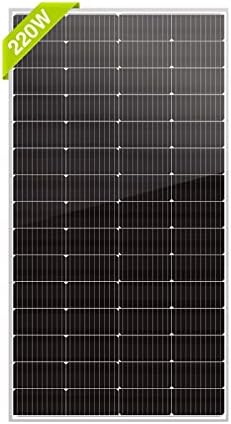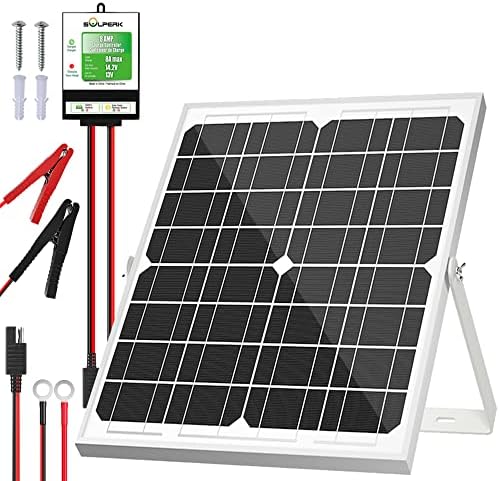# The Rise of Solar Energy: How Solar Panels Are Revolutionizing the Energy Industry
Years ago, when I first laid eyes on the shimmering modules atop my neighbor’s roof, I was filled with a mix of curiosity and skepticism. At the time, my life revolved around conserving every drop of water and every bit of energy, so the thought of harnessing sunlight seemed both fantastical and futuristic. Fast-forward to today, and not only have those solar panels become a common sight, but they are also a beacon of hope and sustainability in our increasingly energy-hungry world. Solar energy is not just a trend; it’s a full-blown revolution that’s reshaping the way we think about power.
## A Historical Overview: The Dawn of Solar Energy
To truly appreciate the rise of solar energy, let’s take a brief glimpse into its history. The concept of harnessing the sun’s energy isn’t new; it can be traced back to the 7th century when people used magnifying glasses to focus sunlight and start fires. Fast-forward to the 20th century, and the first practical solar cell was developed in 1954 by Bell Labs. Initially, solar technology was primarily used in space, powering satellites and other high-tech functions. However, as technology progressed and global awareness of climate change surfaced, solar energy began to penetrate the residential and commercial sectors.
## The Mechanics Behind Solar Panels
Solar panels, or photovoltaic (PV) panels, work by converting sunlight into electricity via the photovoltaic effect. Here’s a simplified breakdown:
1. **Photons from sunlight hit the solar cells**: These panels are made of semiconductor materials like silicon.
2. **Excitation of electrons**: The energy from the photons excites electrons, creating an electrical current.
3. **Conversion to usable electricity**: Inverters convert this direct current (DC) into alternating current (AC), which is usable for homes and businesses.
4. **Energy storage**: Excess energy can be stored in batteries for later use, drastically reducing dependence on grid power and providing energy security.
## Why Solar Energy is Gaining Traction
### 1. **Environmental Benefits**
The most compelling argument for solar energy is its minimal environmental impact. Unlike fossil fuels, which release harmful greenhouse gases, solar energy is clean and renewable. According to data from the U.S. Environmental Protection Agency, solar energy can drastically reduce carbon footprints, making it an essential player in the fight against climate change.
### 2. **Economic Advantages**
With technological advancements, the cost of solar panels has fallen dramatically over the last decade. The U.S. Department of Energy reports that the cost of solar has dropped by about 82% since 2010. This makes solar energy more accessible for homeowners and businesses alike. Furthermore, tax credits and incentives at the federal and state levels make installing solar panels an economically savvy choice.
### 3. **Energy Independence**
For many, particularly those living off the grid, solar energy represents a step toward energy independence. Imagine a world where you aren’t susceptible to fluctuating energy prices or outages. By adopting solar panels, individuals can generate their own power, leading to greater self-sufficiency and resilience during crises.
### 4. **Technology and Innovation**
As the industry grows, we see continuous innovation. New technologies, such as solar shingles and bifacial panels, are making solar power even more efficient and aesthetically pleasing. Researchers are working on incorporating solar energy into everyday materials, like windows and walls, which could revolutionize architecture.
## Challenges and Considerations
While it’s clear that solar energy holds immense potential, it’s crucial to acknowledge some challenges that still need addressing:
– **Intermittency**: Solar panels generate electricity only when the sun shines. Energy storage solutions like batteries are essential but can be costly.
– **Space Requirements**: Installing solar panels requires adequate space. This can be a limiting factor for city dwellers with limited roof access.
– **Initial Investment**: Although prices are declining, installation can still be a significant upfront expense for many families.
## Pro Tips for Solar Panel Installation
If you’re considering jumping into the solar world, here are a few pro tips to guide you:
1. **Assess Your Roof’s Condition**: Before installation, ensure that your roof is in excellent condition. Any necessary repairs should be made prior to the installation process.
2. **Shop Around**: Don’t settle for the first quote you receive. Get multiple estimates from different companies to compare not just prices but also warranties and service options.
3. **Consider Regional Incentives**: Research local and state incentives that can significantly bring down installation costs. Some states offer rebates, while others provide tax credits.
4. **Think Long-Term**: Solar panels can last over 25 years, so consider your home’s long-term energy needs when planning your installation.
5. **Monitor Your Energy Output**: After installation, keeping an eye on your energy production can help you ensure your system is working efficiently.
## Community and Cultural Shifts
As the viability of solar energy expands, communities are starting to rally around this technology. Community solar initiatives allow neighbors to invest in a shared solar project, making it accessible for those who can’t install panels on their own homes. This added layer of community cooperation fosters connection and shared responsibility for our environment.
## The Global Perspective
Globally, countries are taking notice of the benefits of solar energy. For instance, Germany has become a leader in solar energy, supplying a significant portion of its energy needs through photovoltaic systems. China, the largest manufacturer of solar panels, continues to invest heavily in solar infrastructure. The transition isn’t just confined to affluent countries; developing nations are also adopting solar technology as a cost-effective solution for energy access, proving that renewable energy can indeed pave the way for a brighter future.
## Conclusion: The Future is Bright
As we look ahead, the rise of solar energy signifies not just a technological shift but a cultural movement. It offers a path toward sustainable living, economic empowerment, and community resilience. Whether you’re an off-grid enthusiast or a city dweller, embracing solar energy can transform your relationship with power and the planet. The power of the sun is not just a bright idea; it’s a bright future.
### In Summary
– **Historical context**: Solar energy has evolved from niche use to mainstream solution.
– **Mechanics**: Understanding how solar panels work helps demystify the technology.
– **Benefits and Challenges**: Solar energy has numerous benefits but is not without obstacles.
– **Practical advice**: Actionable tips can simplify your solar journey.
– **Community and global trends**: Collective efforts and global investment are paving the way for solar integration into everyday life.
So why wait? Hop on the solar train and join millions who are making a positive impact, one sunbeam at a time!



